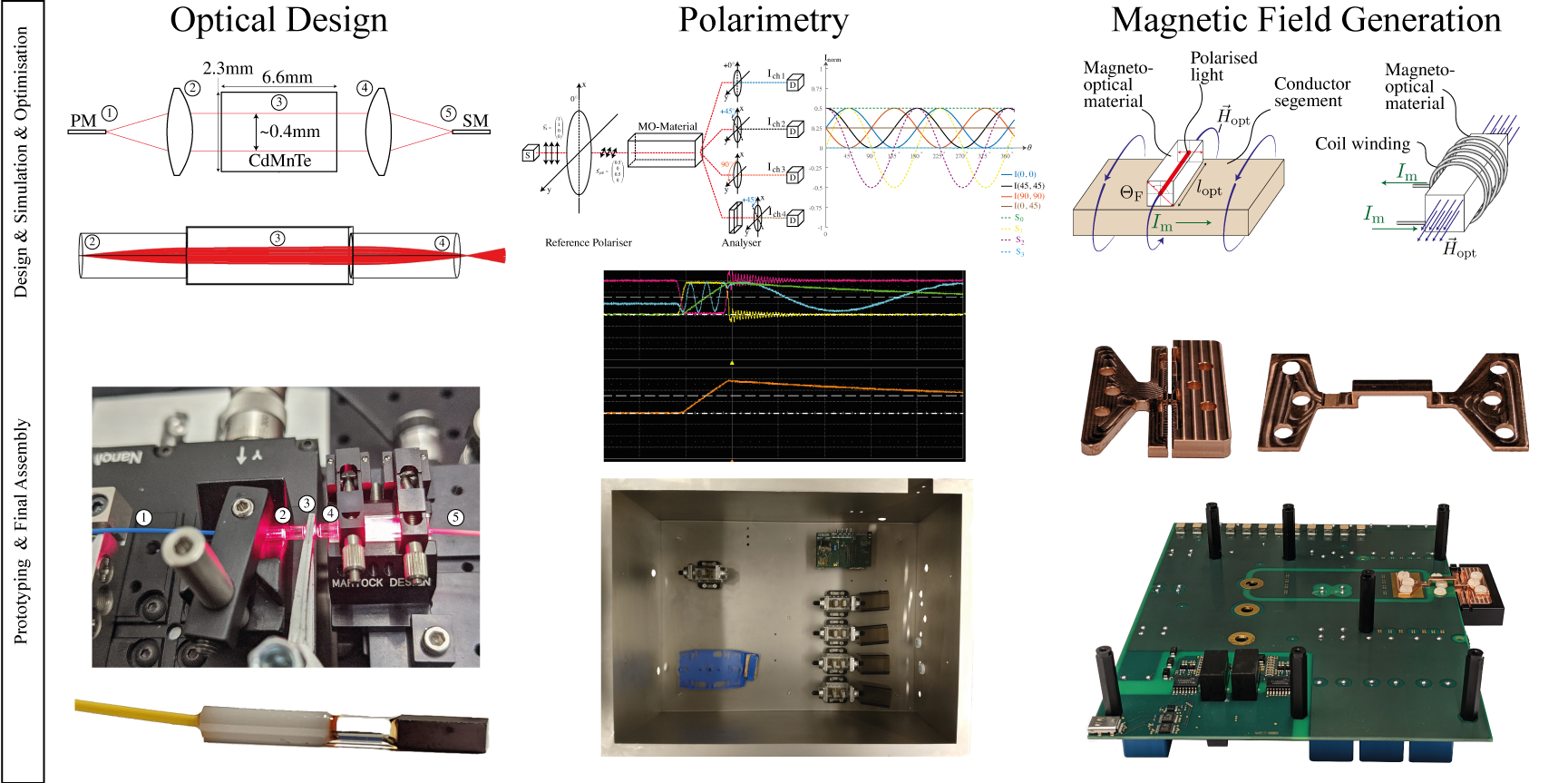Optical Current Measurement System
The Faraday effect describes the influence of a magnetic field on the polarisation state of polarised light that is propagated through a magneto-optical (MO) medium. Depending on the magnitude of this magnetic field and a material characteristic of the MO-material, the Verdet constant, the plane of polarisation of linearly polarised light is rotated by an angle θ. After the optical modulation by the MO-material, the polarisation state is retrieved by an analyser stage, consisting of multiple linear polarisers, quarter-wave plates and optical detectors (photodiode, transimpedance analysers) and digitally evaluated.

This project aims to use the Faraday effect to accurately measure fast rising, high amplitude currents (5-10 kA). The measurement concept is based on multiple rotations of the plane of polarisation in order to achieve a high sensitivity with respect to the current to be measured. A Faraday rotator, built from a diluted magnetic seminconductor (cadmium manganese telluride), achieves a very high optical rotation per magnetic field amplitude and unit length providing a good trade-off between the achievable measurement bandwidth and necessary sensitivity. The rotator is embedded in a geometry optimised copper busbar that defines the magnetic field through the MO-material and provides a direct relation between the current to be measured, the magnetic field and the measured optical rotation.
The optical signal, modulated by the sensor probe (MO-material and conductor), is eventually analysed by a 4-channel Stokes polarimeter in order to retrieve the changes in the state of polarisation. From these measurements, the current that has initially generated the magnetic field can be estimated.
This project is partially funded by CERN under contract KE3928/TE.